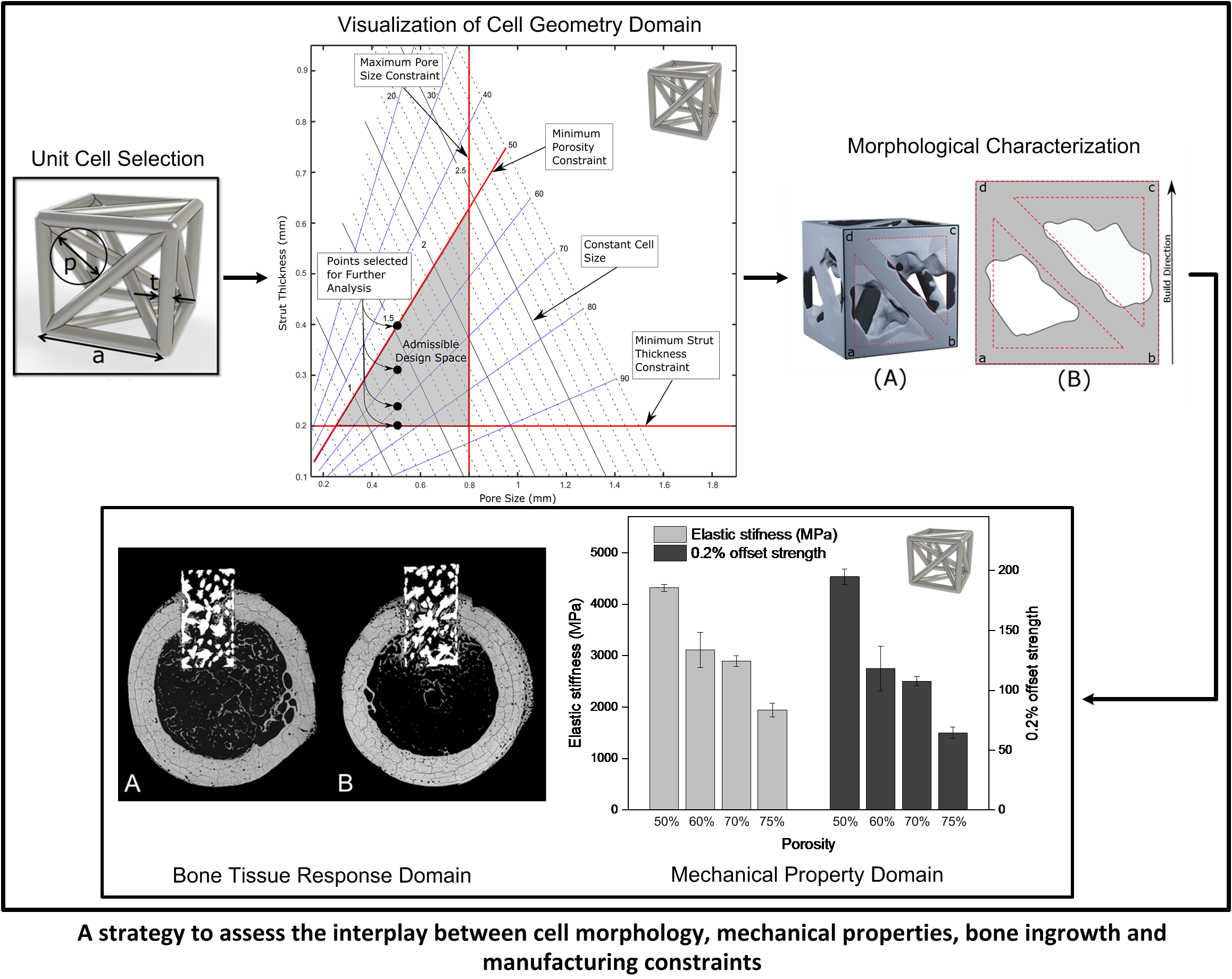Description
High-strength fully porous biomaterials built with additive manufacturing provide an exciting opportunity for load-bearing orthopaedic applications. While factors controlling their mechanical and biological response have recently been the subject of intense research, the interplay between mechanical properties, bone ingrowth requirements, and manufacturing constraints, is still unclear. In collaboration with the department of Orthopaedic at McGill, this work attempts to introduce high-strength stretch-dominated topologies and methodological strategies to understand the relationship of cell topology, pore size, porosity with constraints imposed by bone ingrowth requirements and additive manufacturing. This research is the first to demonstrate the occurrence of bone ingrowth into high-strength porous biomaterials which have higher structural efficiency than current porous biomaterials in the market.
Relevant Publications
Arabnejad S, Johnston RB, Pura JA, Singh B, Tanzer M, Pasini D, High-Strength Porous Biomaterials for Bone Replacement: a Strategy to Assess the Interplay between Cell Morphology, Mechanical Properties, Bone Ingrowth and Manufacturing Constraints, Acta Biomaterialia, Vol. 30, pp. 345–356, 2016.
Bagheri ZS, Melancon D, Liu L, Johnston RB, Pasini D, Compensation Strategy to Reduce Geometry and Mechanics Mismatches in Porous Biomaterials Built with Selective Laser Melting, Journal of the Mechanical Behavior of Biomedical Materials, Special issue on the Mechanics of Additively Manufactured Biomaterials and Implants, Vol. 70, pp. 17–27, 2017.
